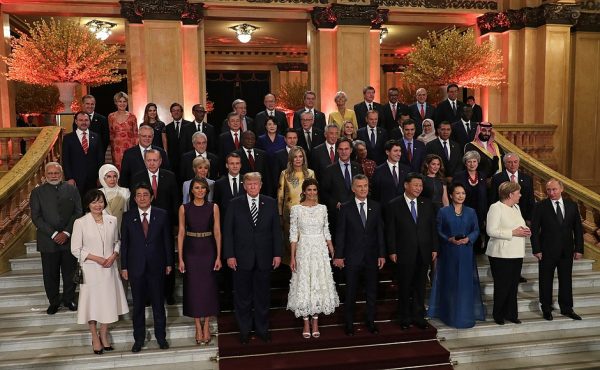

Follow us on:  
|


US President Donald Trump said the G20 Summit was a success for America’s interests [PPIO]
The US agreed not to raise current tariffs on some $200 billion in Chinese goods from 10 to 25 per cent on January 1, 2019.
In return, the Chinese promised to reduce the trade deficit with the US by agreeing to purchase American-made industrial, energy and agricultural products.
“Both parties agree that they will endeavor to have this transaction completed within the next 90 days. If at the end of this period of time, the parties are unable to reach an agreement, the 10 per cent tariffs will be raised to 25 per cent,” a White House statement said early Sunday.
It’s possibly the best possible outcome of the first meeting – a working dinner – between Chinese President Xi Jinping and his US counterpart Donald Trump since a trade war erupted between the two economic powerhouses last spring.
While no one really expected either president to fall on their swords and fight the trade war to the bitter end (likely reversing any global economic boost of the past few years), the rhetoric from the White House had lately been full of bluster.
Although the two leaders had talked on the phone weeks leading up to the G20 Summit, Trump had said he was willing to reach an agreement but didn’t really think there was a need to.
The Chinese have accused the US of shooting itself in the foot, creating a lose-lose situation for all.
“By putting domestic laws above international laws, the United States has broken its commitment to all members of the World Trade Organization and has disregarded and damaged multilateral rules of the World Trade Organization,” the Chinese Ministry of Commerce has repeatedly warned.
Win-win relationship?
But the Chinese were more willing to carve out a deal. Chinese Foreign Minister Wang Yi, who had been critical of the US position on trade with his country, hailed the success off the Trump-Xi meeting and said the two countries were now in “win-win cooperation”
On Sunday, the official news agency Xinhua praised the outcome of the talks, saying both sides approached the trade impasse with sincerity.
“As long as the two countries join efforts to remove disturbances, build up mutual trust and step toward each other, they will be able to have both the wisdom and time enough to manage their differences properly,” a Xinhua commentary on Sunday said.
Trump did not immediately address his working dinner with Xi but Tweeted that he had great success in dealing with various countries at the G20.
Earlier, he said he had a great working relationship with Xi which would help in reaching an agreement.
So how did we get here?
Trump has long claimed that China has taken advantage of the US.
On the campaign trail to become president, he accused China of unfair measures limiting US commerce in China.
Trump has also long accused China of “discriminatory” technology transfers from the US, as well as intellectual property violations.
The Office of the United States Trade Representative recently upgraded its Section 301 investigation to support Trump’s claims on China’s technology transfer, intellectual property and innovation policies.
It may as well have been a showdown between multilateralism and protectionist “America First” policies which have already rattled the global economy.
Since late spring, the US slapped tariffs on $250 billion in Chinese goods; the Chinese responded with tariffs on $110 billion in American goods targeting economically important industries such as agriculture, with special emphasis on soybeans (half of all US soybean production is exported to China), crude oil and auto parts.
The Chinese list reached nearly 600 other items, including pork, aircraft parts, meat and fruit processors, and hundreds of other industrial products.
The Chinese said that the US had started the biggest trade war in economic history.
The International Monetary Fund agrees, saying that the trade war could escalate to a scenario where global growth sees a 0.5 per cent drop over the next year.
There was also domestic pressure on the Trump administration to work out some kind of deal.
US-based tech giants such as Apple and Microsoft among half a dozen others had been hoping that the two leaders could work out some deal to de-escalate from their informal trade war because many of their products are produced in part, or whole, in China.
An escalation of trade tariffs would have forced them to exit China manufacturing for perhaps Malaysia, Vietnam or Indonesia – a lose-lose situation for both China and the US.
By Firas Al-Atraqchi with inputs from Agencies